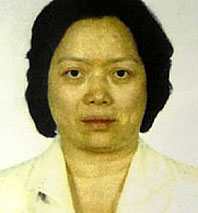
Patrick Radden Keefe is doing his best to blend in as we sit down to a meal at Yung Sun Restaurant on East Broadway, a strictly Fujianese stretch of Chinatown a couple of blocks east of the Cantonese tourist traps where a redheaded white guy might not seem so out of place. His awkwardness, as he slips a tape recorder into his shirt pocket, has nothing to do with an outsider’s modesty. His new book, The Snakehead (Doubleday), a riveting blend of true crime and immigration history, follows the rise and fall of a Chinese-American known as Sister Ping, who for decades used this very restaurant as a base for Chinatown’s largest and most efficient human-smuggling operation. Ping was sentenced to 35 years in prison in 2006, but her husband still works here, and our petite waitress—who’s just politely warned me that there is pork in the fishball soup—is their daughter.
“I really need to keep my voice down,” Keefe mutters, before quietly explaining how he, a J.D. with multiple degrees from Yale and Cambridge, among other schools, as well as a day job at a think tank, came to a story inspired in equal parts by Tom Friedman and The Wire. After writing his first book, Chatter, which took a stab at documenting the NSA’s spying network a year before wiretapping became a national buzzword (“It’s punishing to be prescient,” he says), Keefe got wind of Sister Ping’s trial and the engrossing sequence of events that finally, after years of bungled investigations, led to her conviction.
The route to America from China is known by some illegal immigrants as “the snake”; the smuggler is therefore the snakehead. Ping, who emigrated legally in 1981 from the small seafaring province of Fujian, began smuggling fellow Fujianese (who settled east of the Bowery, greatly expanding Chinatown) soon after her arrival in New York City. The business boomed after Tiananmen Square, when asylum was granted to most comers—provided they survived the trip. Her operation eventually became so big that she needed enforcers to collect the extortionate smuggling fees (which now run as high as $75,000 a head) and to help off-load passengers from the boats that carried them from China. The man she turned to, a vicious gang leader named Ah Kay, was responsible for one of the greatest disasters in immigration history. His failure to off-load Ping’s passengers from the Golden Venture in 1993 (he was in hiding during a gang war) resulted in the ship’s running into a sand bar off Rockaway. Hundreds of starving immigrants—who had been traveling for well over a year in appalling conditions—swam to shore in rough waters; ten of them died. After a dozen years in prison, Ah Kay testified against Sister Ping; he now roams free under witness protection.
In Chinatown, locals despise Ah Kay but think Ping was unfairly scapegoated. To them, she is more benefactor than Don Corleone. After all, many of her neighbors would still be in Fujian if not for her. “Some people will tell you her big sin was going into business with the gang,” says Keefe, but he sees it as a fatal flaw common in gangster narratives from Scarface to Goodfellas: Ping got too greedy. When she saw she could make more money smuggling people in bulk—on boats rather than airplanes—safety and decency fell by the wayside.
Keefe’s narrative delves deeply into Chinatown and the labyrinthine smuggling routes between China and America, but it’s also a glimpse into our conflicted feelings about illegals and the morass of America’s immigration policy. The Golden Venture was to smuggling what 9/11 was to counterterrorism: a tragedy that forced officials to get serious about the problem—and also to overreact. Keefe’s policy-wonk roots emerge in his refusal to paint the issues in black and white. He points out that most of those Golden Venture “victims” who were deported reentered the U.S. illegally. “At a glance,” he says, “this could seem like a really depressing story, but to me it was deeply inspiring. If you measure someone’s right to be here by what they’ve sacrificed to come, these guys are in some ways more American than I am.”
See Also
• A Map of Significant Snakehead Locations in Chinatown
